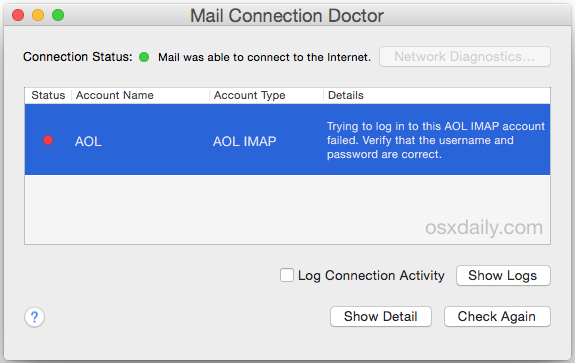

- #Cox email keeps asking for password install
- #Cox email keeps asking for password update
- #Cox email keeps asking for password upgrade
- #Cox email keeps asking for password password
#Cox email keeps asking for password password
Running the UpdateCas.ps1 script, followed by IISreset, fixed the problem.Outlook keeps asking for password Fix Outlook password issues In any case, the symptoms were the same as when the CU is installed without running as Administrator, presenting errors in the ECP, OWA and, most crucially, AutoDiscover virtual directories.
#Cox email keeps asking for password install
I’m still not clear what the issue was there, but the CU had been installed for weeks and the Exchange setup logs and event viewer showed the system as having been rebooted as part of the setup, but Add/Remove Programs showed the install date as the date when the Windows updates were installed.
#Cox email keeps asking for password update
What ended up being the case was that the IIS virtual directories used by Exchange had been corrupted by some combination of the CU update and Windows updates. The initial credential prompt only initially was reported as affecting Outlook 2013 users, which sent us down the incorrect rabbit hole of Modern Authentication and Office updates. What happened was the Exchange server had been updated to the latest CU a few weeks earlier and, over the weekend, had had Windows updates installed. The hybrid part was an on-prem Exchange 2016 used for managing Exchange attributes that are not possible to change in EOL when your user accounts are synced from on-prem. Scenario was that all mailboxes were in O365, with a technically hybrid environment and on-prem AD. Just a quick note about my experience, as it had a bunch of consultants and Microsoft support scratching their heads for quite a while before we finally resolved it. SO … is there any permanent setting or script they could run that would let me uncheck “Always ask before opening this type of file” without being an Admin myself?Īnd even though most of your articles are way above my skillset, I enjoy reading your website. Right now, one of my Admins had to spend more than an hour on this. To let me uncheck the “Always ask” option, my Admins must first give me Admin status rights, and only then can I uncheck “Always ask before opening this type of file”. When I double-click on an attachment in an email, Outlook always FIRST prompts me “Would you like to open the file or save it to your computer?”, and the option for “Always ask before opening this type of file” is checked but greyed out, so I cannot uncheck it.
#Cox email keeps asking for password upgrade
I’m a normal “User” at my law firm, and my PC now has Win 10 Pro 64-bit and Office 2016 32-bit.Įach time my Admins repair, reinstall or upgrade my Office, I have a recurring problem opening attachments from Outlook email. Set-ItemProperty -Path "HKCU:\Software\Microsoft\Office\16.0\Outlook\AutoDiscover" -Name 'ExcludeExplicitO365Endpoint' -Value 1 -Type DWORD –Forceĭifferent issue but couldn’t find a way to email you, Mr. Or, using the PowerShell cmdlet Set-ItemProperty: Reg add HKEY_CURRENT_USER\Software\Microsoft\Office\x.0\Outlook\AutoDiscover /t REG_DWORD /v ExcludeExplicitO365Endpoint /d 1 You can make changes to the registry with the following command: 2017 and newer (this parameter is additional to the list of parameters that determine the types of Autodiscover processes when Outlook starts:

The ExcludeExplicitO365Endpoint registry parameter is applicable to Outlook 2016 version. To disable this check, go to the registry key HKEY_CURRENT_USER\Software \Microsoft\Office\16.0\Outlook\AutoDiscover and create new DWORD parameter named ExcludeExplicitO365Endpoint and value 1. You can verify this by using the Fiddler or TCPView tools and track the attempts to connect to the and servers. Somewhere in the fall of 2016, an update was released for Outlook 2016 that enabled a mandatory check of the Office 365 cloud connection point. If the computer with a problem Outlook is not joined to the Active Directory domain, then on the contrary, you should try to switc from NTLM authentication to Basic. At the same time, you need to check the authentication type used for the IIS site on the Exchange server. If your Outlook is configured to access the Exchange mailbox using Outlook Anywhere (MAPI over HTTP), verify that NTLM authentication is used.


 0 kommentar(er)
0 kommentar(er)
